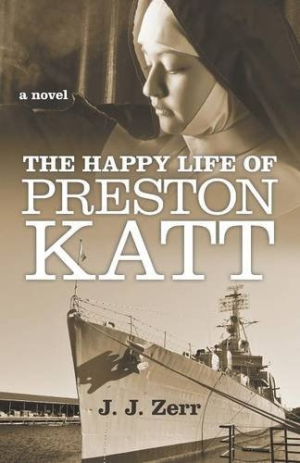
The Happy Life of Preston Katt
Zerr depicts with equal skill the mundane duties on naval ships, fierce battles against Japanese forces, and deep facets of the main character.
This historical novel focuses on the Japanese attack of Pearl Harbor and its aftermath. J. J. Zerr provides a vivid portrayal of naval operations in The Happy Life of Preston Katt, as seen through the eyes of an enlisted man fresh out of boot camp.
A timid, slightly-built young man, Seaman Second Class Preston Katt endured an impoverished childhood in Missouri before joining the Navy. He seems unlikely to succeed as a sailor when he reports for duty aboard the Callahan, a destroyer docked at Pearl Harbor. Insecure and eager to be liked, Preston falls under the influence of a shipmate who encourages him to bend Navy rules. Their reckless behavior comes to an abrupt end when Japanese planes and submarines inflict destruction and death on the peaceful harbor. Caught in the full chaos of war, Preston relies on his faith in God, ability to spot enemy planes and ships, and deep respect for humanity.
Zerr served in the US Navy and has written three previous books set in that milieu. His considerable knowledge of naval life also informs this novel’s narrative. For instance, describing a large task force which includes the Callahan, making its way westward, he writes, “each ship dropped a wide white runner across the cobalt sea; and each wake congealed with others to paint a wide, white arrow, which would magnetically pull enemy eyes to the task force’s position.”
Preston develops such expertise at the ship’s lookout station that a shipmate calls him “Eagle-Eye.” After four days of intense fighting, he and other exhausted crew members gather at the mess decks for food and relaxation. Sailors, called “snipes,” who work deep within the ship, ask about the bomber Preston discovered just in time for the ship’s guns to destroy it. Here, the author reveals a deeper facet of Preston’s character: “Katt tuned them out. He ate slowly and thought about burning planes and burning pilots in the cockpits.” The passage concludes: “Katt didn’t want to talk about it. He didn’t know how.”
Zerr’s active writing style depicts with equal skill the mundane duties on board and the ship’s fierce battles against both Japanese forces and powerful storms at high sea. Scenes build to intense and unexpected climaxes and transition smoothly into new plot developments. The characters who populate this story come to life satisfactorily. Flashbacks to Preston’s childhood provide information about his derelict mother, the two women who befriended him, and his belief in Catholicism that further explain his personality. Occasional overuse of modifiers and contemporary speech patterns are noted.
The Happy Life of Preston Katt offers a fast-paced, moving account of a young man’s attempt to overcome an unfortunate childhood and prove himself worthy of manhood.
Reviewed by
Margaret Cullison
Disclosure: This article is not an endorsement, but a review. The publisher of this book provided free copies of the book and paid a small fee to have their book reviewed by a professional reviewer. Foreword Reviews and Clarion Reviews make no guarantee that the publisher will receive a positive review. Foreword Magazine, Inc. is disclosing this in accordance with the Federal Trade Commission’s 16 CFR, Part 255.
